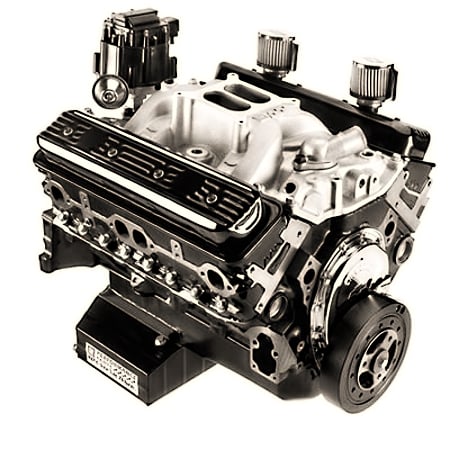
Even with the dyno "loosened" up a bit, which is likely the case here, the engine didn't enjoy a strong top end charge and quit making power early in the rpm range. Even so we are seeing another XE274 cammed 455 pump gas street engine DONE by 5200rpm's. Not the same dyno so the comparisons can be argued some. My old 455, 232cfm "D" ports, 9.97 to 1 compression, Crower 60919 cam. I have a few results from our own engines dyno'd here to compare with it.Ĥ55, untouched (not even port matched) #46 350 heads with larger valves in them, Crower 60919 cam, high ratio rockers, 9.8 to 1 compression. By far and above the best peak HP numbers I've seen to date in similiar engines using that cam. I was sent the results a few days ago, 455, professionally built, professionally ported (240cfm) "D" port heads, 9.2 to 1 compression.Ĥ41hp 5200rpms, 511tq at 3600rpm's. If this 347 had a higher compression ratio, the tighter LSA of the Thumpr would have made less of a difference on the dyno.I'm minimize my opinion(s), here, but here are the results. With a tighter 107 LSA, the increase in cylinder pressure helps make up for the low compression ratio of the motor. On a relatively low compression motor like this 347, you don't have much cylinder pressure to begin with, so having a wide LSA really hurts you. Tight LSA cams usually drop off at high rpm, but the reason that's not happening in this instance has to do with cylinder pressure. The improvements in intake charge filling and cylinder pressure is what's bumping up both torque and horsepower.

"What's going on in this motor is that the tighter LSA and increased overlap of the Thumpr is helping pull more air through the intake valve. Plus, the Thumpr has the least amount of lift, so you can throw that out of the equation as well," he says. "The intake duration of the Thumpr cam falls right in between Cam A and Cam B, so duration isn't what's accounting for the power difference. As it turns out, it's all about cylinder pressure. Seeking the expertise of someone much smarter than the typical journalist, we ran the results by SAM's Head Instructor Judson Massingill for a more educated opinion. Again, neither of these scenarios held true during our test.

Intake valve closing is by far the most important of the four valve events in terms of power output, and a later IC generally improves top end power while sacrificing low-end torque. Furthermore, compared to Cam B, the Thumpr has an earlier intake valve closing point of 65 degrees after bottom dead center as opposed to 70 degrees ABDC. Tighter lobe-separation angles generally boost low-end torque at the expense of top end power. Whereas Cam A and Cam B both shared 112-degree LSAs, the Thumpr was ground at 107 degrees. The most obvious distinguishing factor between the Thumpr and its test mates is its tight LSA. Instead, it proved to be the most rev-happy cam of the bunch. Secondly, the Thumpr's specs suggest that it should run out of breath the earliest. First off, the biggest cam didn't make the most power. What started out as a simple cam test turned out to be a real head-scratcher, as the results were puzzling for a number of reasons. As one of COMP's Thumpr grinds, Cam C was designed with a lopey, aggressive-sounding idle in mind, and as such, it has a tighter LSA and an earlier exhaust valve opening point. The wild card of the bunch is Cam C, which measures in at 227/241 degrees of duration at. 565/.574-inch lift, also with a 112-degree LSA. Cam B, the largest of the bunch, features 232/240 degrees of duration at.

555/.565-inch lift and a 112-degree lobe-separation angle. The smallest of the lot, which we'll call Cam A for the sake of simplicity, is a 224/232-at-.050 unit with. The challenge was picking three cams that were different enough to show a measurable difference on the dyno, yet similar enough to where variations in horsepower and torque output could be pinpointed to specific differences in their lobe profiles. As no surprise, a quick call to COMP Cams' Trent Goodwin confirmed that the most popular grinds in the SBF catalog are relatively mild designs that offer a great balance between sub-6,500 rpm power and low-speed driveability.


 0 kommentar(er)
0 kommentar(er)
